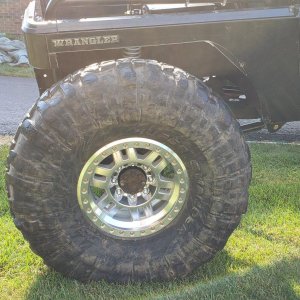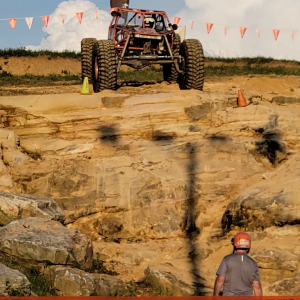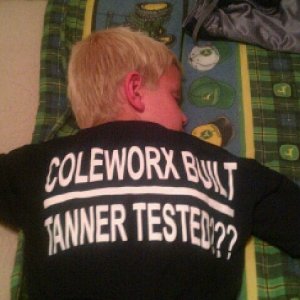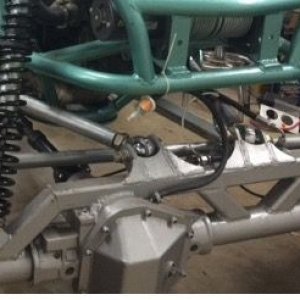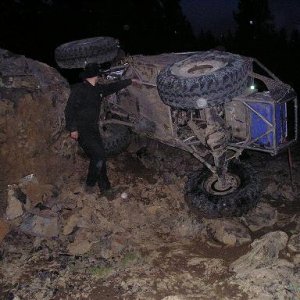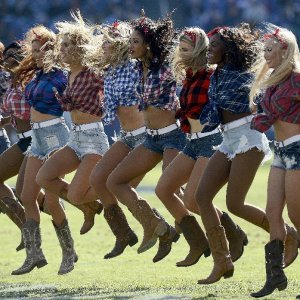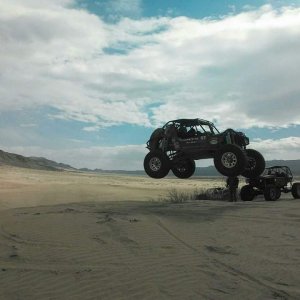Beerj
Sonzabitches!
Just trying to figure out what I'm missing here. Recently purchased and installed a TK1 sway bar for my buggy. They have a real nice write-up on their site laying out all of the optimal positions for the whole thing. Such as end links at least as long as the shock travel, end link to axle attachment locations 1-2" wider at the bottom and arms level at 50/50 travel. I did all of that and cycled everything and was satisfied. Took it out for the first time and at some point early on I noticed the tabs where the end links mount to the axle were bent over pretty hard. Now, the kit came with just 2, ⅛" thick tabs. I thought they seemed pretty insufficient but figured that's what they sent so maybe they'll work. Also, the heims provided have studs pressed into them that only stick out on 1 side so they can only be mounted single shear, on ⅛" tabs, with the pivoting part being 1¼" away from the tab.
I sent some pics to Tony at TK1 and he immediately said something must be binding. So I disconnected 1 side and fully flexed the rear. Absolutely nothing is anywhere near binding. Did the same for the other side and got the same results. So I took a bunch of pics and measurements and sent them over. After radio silence for 2 days I asked him again, what's the deal and made it clear that I'm blaming the single shear tabs. He said that's extremely unlikely and 100's of others aren't having issues. He then blamed it on me having the lower heims turned 90° from the uppers. They're not binding at all and I'm really having a hard time understanding how that would make any difference whatsoever.
I could cut off the tabs, turn them and try it but that just seems asinine to me since in my mind, it won't make a difference and I'll just be cutting them off again. I'm leaning towards just mounting them double shear with ¼" tabs and hopefully being done with it.
Also, my reasoning for mounting the lower heims with the studs perpendicular to the axle housing is that since there's not much change in the angle of the lower heim, when viewed from the side, that the most angle change would be when viewed from the back, as the end link stays relatively vertical but the axle angles quite a bit from left to right.
What am I missing here?
I sent some pics to Tony at TK1 and he immediately said something must be binding. So I disconnected 1 side and fully flexed the rear. Absolutely nothing is anywhere near binding. Did the same for the other side and got the same results. So I took a bunch of pics and measurements and sent them over. After radio silence for 2 days I asked him again, what's the deal and made it clear that I'm blaming the single shear tabs. He said that's extremely unlikely and 100's of others aren't having issues. He then blamed it on me having the lower heims turned 90° from the uppers. They're not binding at all and I'm really having a hard time understanding how that would make any difference whatsoever.
I could cut off the tabs, turn them and try it but that just seems asinine to me since in my mind, it won't make a difference and I'll just be cutting them off again. I'm leaning towards just mounting them double shear with ¼" tabs and hopefully being done with it.
Also, my reasoning for mounting the lower heims with the studs perpendicular to the axle housing is that since there's not much change in the angle of the lower heim, when viewed from the side, that the most angle change would be when viewed from the back, as the end link stays relatively vertical but the axle angles quite a bit from left to right.
What am I missing here?

